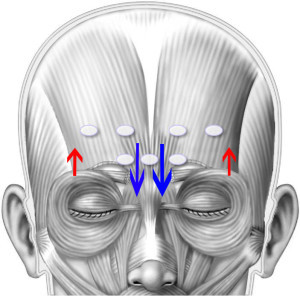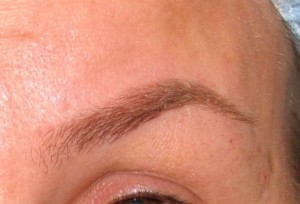What is the “spock brow”?
After treatment with botulinum toxin (Botox, Dysport, Xeomin, etc.) the tail of the eyebrow appears to be over-elevated with a “pulled” appearance. The heightened arch can appear sinister or “spock-like”.
What causes this over-lifted brow?
Unnatural elevation of the brow arch is related to the technique of botulinum administration. Specifically, placement of neurotoxin can enhance or minimize the brow arch. The major muscle of the forehead, the frontalis muscle is solely responsible for lifting the eyebrows. This muscle is also responsible for the horizontal creases across the forehead. If the central portion of the frontalis is “blocked” or relaxed with Botox, the central eyebrows will shift downward or be prevented from lifting. When this occurs, if there is still movement of the lateral (outer edges) of frontalis muscle, movement of the forehead will allow the outer portions of the eyebrows to lift while the central eyebrows are “stuck down”.

What you see in the mirror
The arch of the eyebrows after botulinum treatment is higher than desired. This is a subjective finding. There may be diagonal tension lines in the skin from the upper eyelid to the tail of the eyebrow. When you raise your eyebrows, there is movement on the sides of the forehead, but less movement centrally.


How long do under eye fillers last?
in Botox and fillers, Eye lift/by drkotlusDr. Kotlus is an oculoplastic surgeon in NYC. He explains how long under eye fillers can last in different situations.
A Deep Dive on Dissolving Fillers: what is the enzyme and is it safe?
in Botox and fillers/by drkotlusDr Kotlus explains how hyaluronidase works to dissolve filler with an injection and he shows what the literature says about safety
Do under eye fillers really work to fix the tear trough and dark circles ?
in Botox and fillers, Eye lift/by drkotlus